Whether you're in the market for a carnival memento, some enviable glassware or just want to watch local artisans at work, hit the atmospheric backstreets of Venice for dazzling inspiration.
Venice’s tradition of paper craft began in the 14th century as part of the city’s burgeoning publishing industry. Since then these traditional techniques have taken on a life of their own in studios such as Cárte where maestra Rosanna Corrò creates jewellery boxes and one-of-a-kind contemporary handbags out of marbled paper that shimmers like the lagoon itself. On the island of Giudecca, Fernando di Masone turns hand-pulped paper into free-form lamps at Cartavenezia; while in Castello, Andreatta Andrea covers books, sketchpads and composition folders in unique hand-stamped paper at Fabricharte.
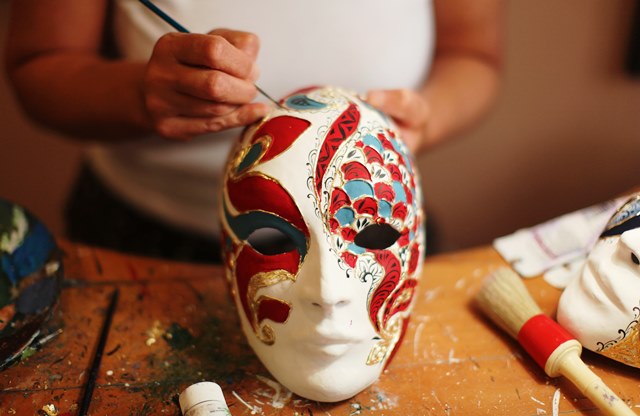
Made with papier mâché, gesso and gilt, Venetian carnival masks are also part of this illustrious tradition. Choose your own from a selection of iconic styles, including the long-nosed plague doctor and the coquettish courtesan at Ca’ Macana.
Blown, beaten and lampworked glass is Venice’s most famous art form, and real Murano glass is a worthy treasure to take home. Venetians have been working in glass since the 10th century, though fire hazards later prompted the move of the city’s furnaces to Murano island. Today, along Murano’s Fondamenta dei Vetrai, traditions are upheld in Cesare Toffolo’s winged goblets and Davide Penso’s lampworked glass beads, while striking modern glass designs by Nason Moretti at ElleElle, Marina e Susanna Sent and Venini keep the craft moving forward.
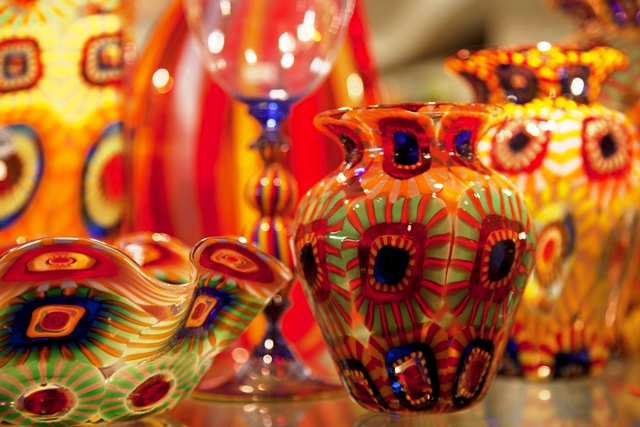
Buyer beware
The Consorzio Promovetro Murano, which promotes Murano glass and represents more than 50 craftsmen, estimates that only 30% of the glass sold in Venice is authentic. To make sure that you go home with the real deal, follow these simple tips:
Anything that stands still long enough in this city is liable to end up swagged, tasseled and upholstered. Venetian lace was a fashion must-have for centuries, as Burano’s Museo del Merletto attests, while renowned companies Bevilacqua and Rubelli still weave velvet and damask fabrics for aristocrats and celebrities. But the modern master of Venetian bohemian textiles is Fortuny, whose showroom on Giudecca features hand-stamped wall coverings and whose shatteringly modern Delphi-style gowns are still produced by Venetia Studium.
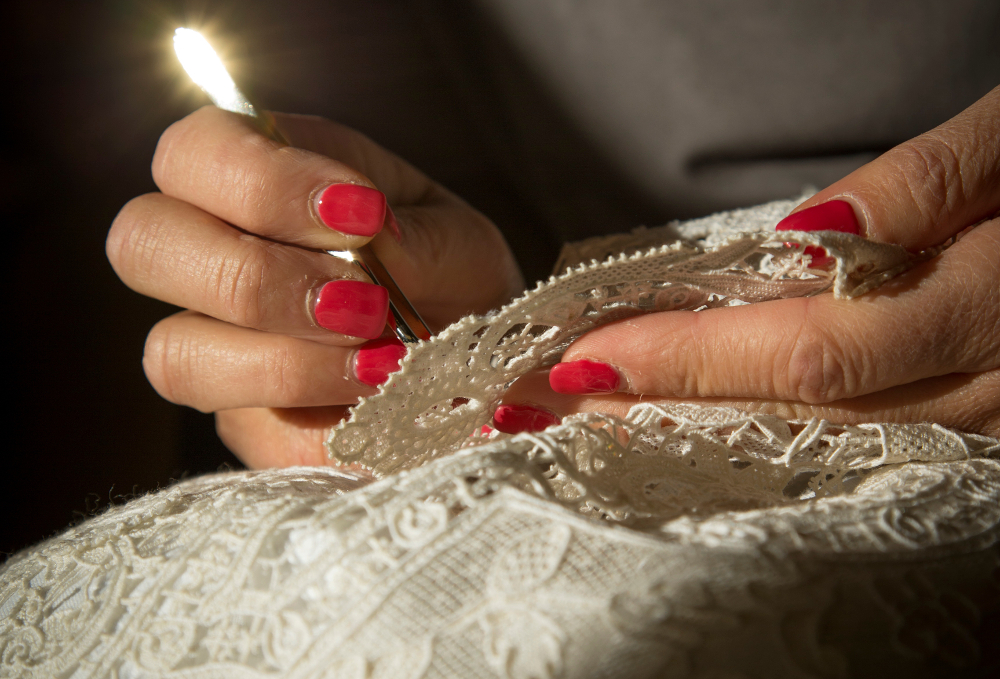
There may no longer be 5000 looms in the city or cohorts of lacemakers on Burano island, but a few exclusive studios still work in the old ways. Chiarastella Cattana’s unique cotton-and-linen mix jacquard fabrics are made up on a 3m-wide handloom; Fiorella’s velvet smoking jackets are hand-printed with silver skulls; Virginia Preo’s rainbow coloured casuals come in a unique two-ply cashmere; and Emilia di Ammendola and her team of local lacemakers still produce one-off bedlinens, tablecloths and runners with the finest lace detailing.
Although Tuscany’s tradition of leatherwork is more famous, Veneto workshops produce over 45 million pairs of shoes every year. Unsurprising really, as shoes have been causing a stir here since the 18th century, when working girls stalked the shady end of the Ponte delle Tette in their 30cm high zampe (elephant’s foot) platforms. Palazzo Mocenigo has a few pairs in their dashing collection of historic fashion.
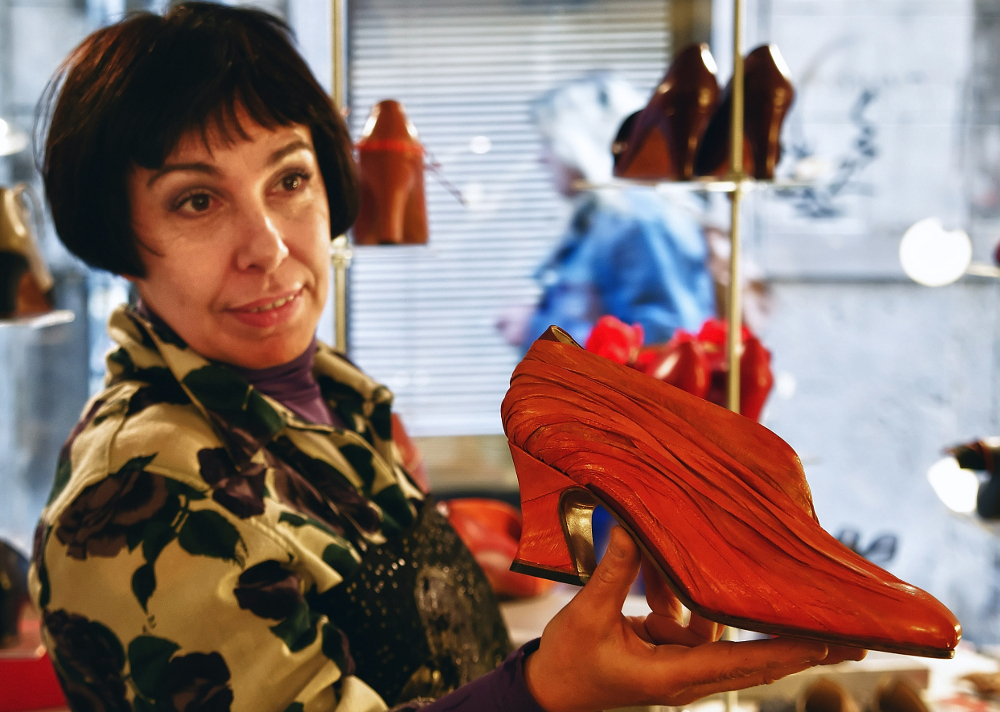
The height of heels may no longer be such a hot topic, but original designs, rare leathers and bespoke hand stitching are still a firm fixture of Venetian calegher (cobblers) such as Daniela Ghezzo, Gabriele Gmeiner and Giovanna Zanella. Daniela, who only makes to order, studied under master shoemaker Rolando Segalin before taking over his atelier, while Gabriele honed her craft at Hermès and John Lobb. Where Ghezzo and Gmeiner are classicists, Zanella, the daughter of a Murano glassblower, has a more flamboyant streak and produces extraordinary shoes, sculpted and crested like lagoon birds. More practical and affordable footwear in soft vachette leather can be bought from Kalimala Cuoiera.
In the past, laws attempted to limit conspicuous displays of diamonds and pearls on Venetian socialites, and ban the production of false gems out of dazzlingly clear Murano glass. All to no avail – crafty Venetian jewellers have simply thought their way around the problem, producing pearls out of glass, necklaces out of paper and fascinators out of feathers and microbeads.
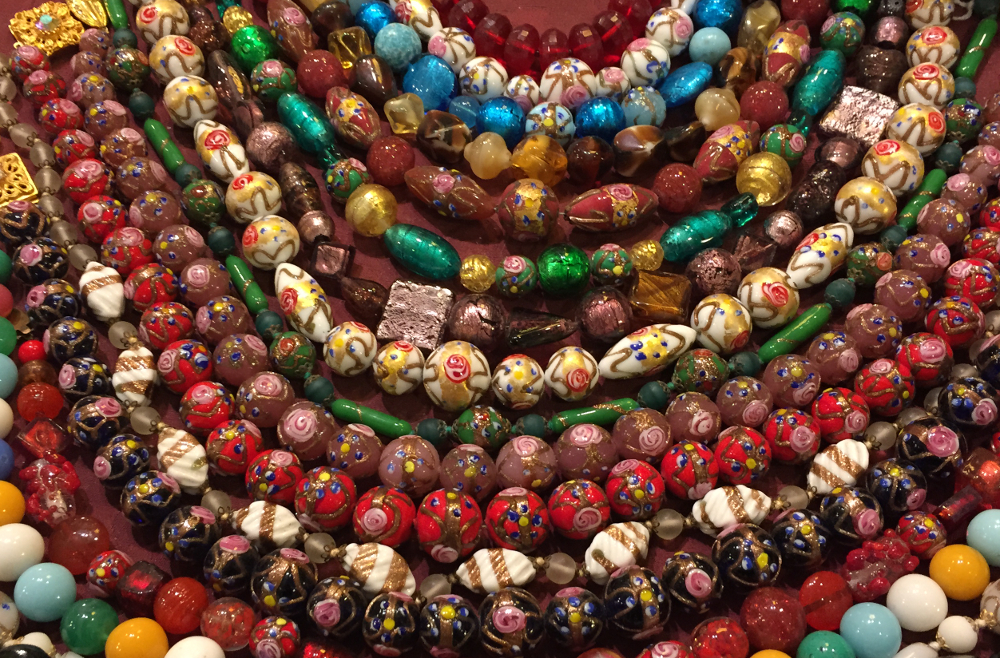
While you can still find enamelled baroque diadems in gold and gems from master goldsmith Sigfrido Cipolato; young blood designers Daniele and Stefano Attombri are turning tradition on its head using traditional perline (glass beads) in sculptural pieces crafted from copper, silver and metal alloys. More work from emerging talent can be found at the Michela Pavan Gallery, Laberintho and Gualti, where brooches look like stellar explosions and resin rings sprout tendrils like sea anemones.